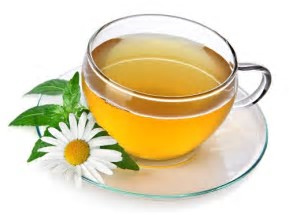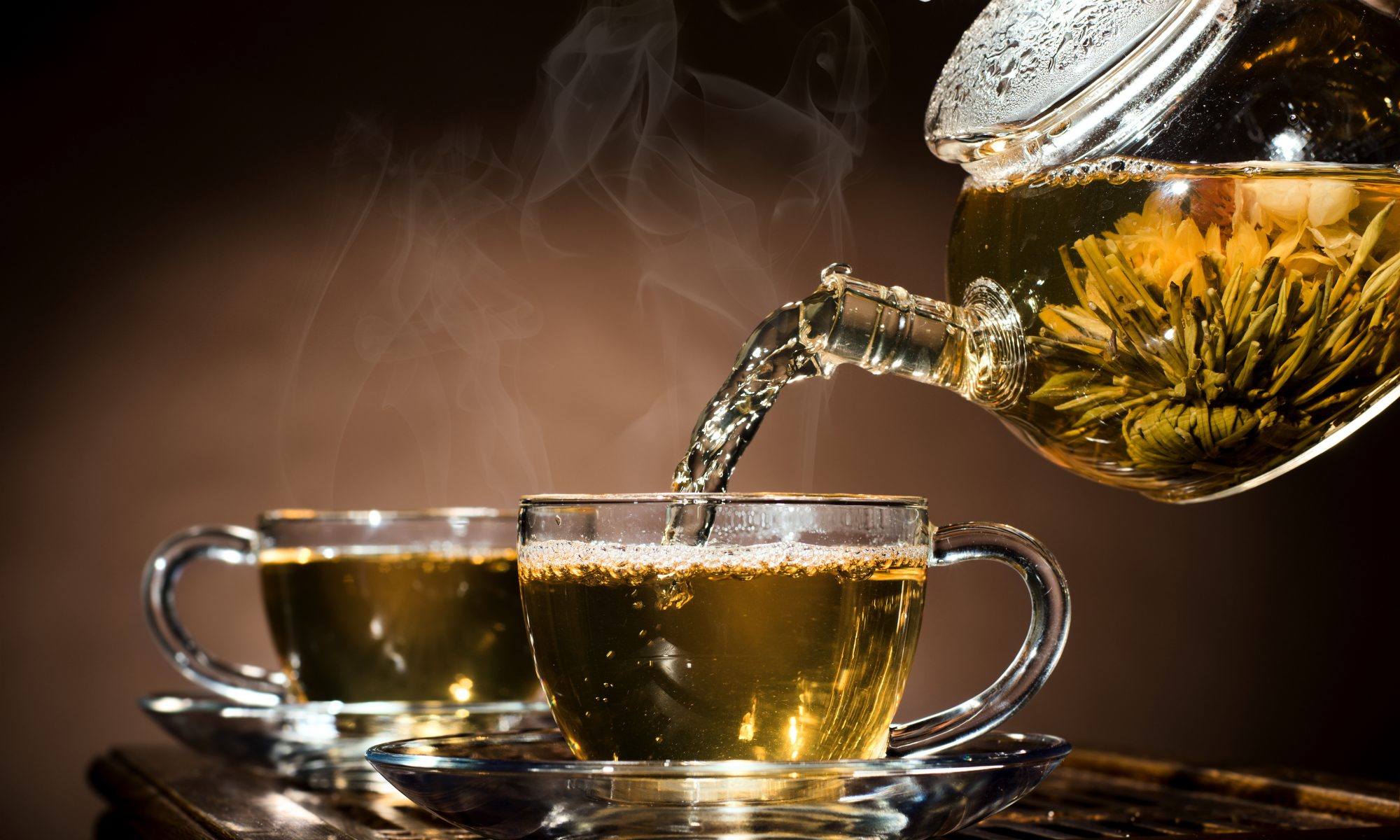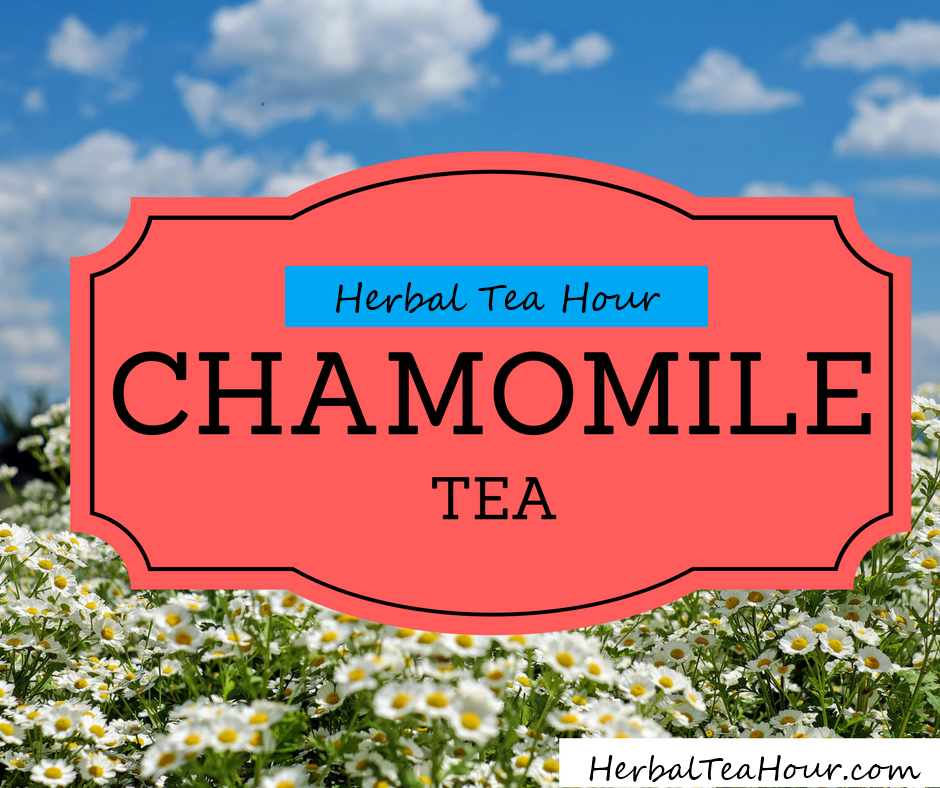Chamomile Tea: Intro
Skip Ahead To:
Chamomile tea is a popular herbal tea made from fresh or dried chamomile flowers. Chamomile plants are included in Asteraceae family. This family is one of the largest in terms of species, and many of the other herbal teas are made with plants from this same family.
First, as an Amazon Associate, I earn from qualifying purchases.
Chamomile flowers are similar in appearance to daisies, which are closely related members of the same family. There are several species of chamomile flowers that are used to make herbal tea, and some species are annual while others are perennial. The most prevalent of these species include matricaria chamomilla with common names wild chamomile, scented mayweed, and German chamomile. This species is an annual plant. The second most popular species is Chamaemelum nobile, which is also known as English chamomile, Roman chamomile, garden chamomile, and whig plant. This species is perennial plant. Both of these varieties of chamomile contain the same active compounds and anti-oxidants that aid relaxation and help recovery from physical fatigue. You can read more details about chamomile tea below, including appearance, history, benefits/uses, side effects, and a free recipe!
You can read my related post to discover other popular types of herbal tea.
Chamomile Tea: The Ultimate Guide

Please note: This post contains affiliate links. An affiliate link means that we may earn advertising/referral fees if you make a purchase through our links.
Appearance
The Chamomile flowers (pictured above) look similar to the common daisy. Chamomile flowers have long and stiff stems that are generally smooth. The plants vary widely in height and are found in the range of 6 inches to 2 feet tall. The leaves are long and narrow. The flowers have several white petals (ray florets) surrounding a bright yellow center (disc florets). The flowers commonly bloom in the summer, and they have a pleasant and distinctive aroma. Some compare the smell to fresh apples, which is how the flower got its name. You can read more about the name in the history section below.
History
The name chamomile derived from the Greek word khamaimelon, which means “earth apple.” This is due to the pleasant aroma of the flower, which smells like fresh apples.
The preparation and consumption of chamomile tea has been practiced since Ancient Egypt. The Egyptians commonly used the tea as remedy to help reduce the severity and duration of colds. They also consumed the tea to help reduce fevers. Severe fever, referred to as “ague,” were experienced by Egyptians with Malaria and other deadly diseases. Ague included chills, significant increases in body temperature, and intense sweating occurring in regular intervals. The tea was found to significantly reduce the severity of these symptoms. The tea consumption practices spread to Rome, where the ancient romans used the tea for similar purposes. Chamaemelum nobile is also referred to as Roman Chamomile, but this common name is derived from a botanist in the 1800’s that found the flower growing near the famous Roman Colosseum.
Chamomile has other historical uses besides being consumed in a delicious tea. The Egyptians and Romans also used crushed chamomile flowers as a cosmetic. The Egyptians also used chamomile as an active ingredient used to make embalming oil. The embalming oil helped preserve the bodies of important members of their society, including deceased pharaohs.
This plant is hearty and grows easily in many areas. As a result, it has a wide distribution and can be found all over the world. It is naturally found all over Europe and Asia. The plant has been introduced to the continents of North America, South America, and Australia. In the United States, it has spread quickly in sunny and well-drained areas. Many farmers consider the plant a nuisance and treat it as a weed because it is abundant and grows fast in open soil. The flowers grow near roads and trails as well.
Detailed Analysis of Chamomile Tea Benefits
Herbal teas have been shown to have significant benefits. Chamomile tea has several benefits and positive uses. This is one of the primary reasons the tea has remained so popular. The common uses of the tea include treating allergies (including rhinitis), stomach ulcers, insomnia, swelling, muscle soreness & spasms, menstrual cramps, and digestive issues including hemorrhoids. The German Chamomile flower can be rubbed on the lower rectum to minimize inflammation due to hemorrhoids (I personally wouldn’t attempt this). The tea is excellent at increasing the health of skin and can be used to treat common ailments like psoriasis, eczema, and even chickenpox.
The German Chamomile flower can be rubbed on the lower rectum or anus to minimize inflammation due to hemorrhoids (I personally wouldn’t attempt this). The German Chamomile has been studied extensively, and results show that consuming the flower in tea form reduces anxiety. This means that the tea can be consumed to decrease stress and help treat insomnia.
I completed a detailed analysis of medical journals and trials related to Chamomile. Many of the trials documented several positive effects for chamomile. Most of the human studies were completed in vitro and there were also animal tests. The animal studies have documented anti-anxiety, muscle relaxant, anti-inflammatory and cholesterol reduction effects for chamomile. Scientists are completing advanced research into this subject, and many experts agree that further human clinical trials are necessary before all of the effects are known.
List of Chamomile Tea Uses
Here is a list of the main benefits and positive effects of the tea:
Treatment of Insomnia
One of the primary benefits of Chamomile tea is that it can be used to promote healthy sleep. The tea helps people relax and reduces anxiety which can lead to a full night of restful sleep. The best way to achieve these effects is by consuming the tea before bedtime.
Cold Reduction
Chamomile tea has been consumed for centuries to help reduce the severity and duration of colds. This is another primary benefit of consuming the tea, and it has been validated in several studies. The tea can also be consumed to boost your immune system to reduce the chances of getting a cold.
Possible Cancer Reduction
Previous in vitro studies have documented chamomile extracts have reduce the growth and spread of cancer cells. These cancer cells include skin, prostate, breast, ovarian, and prostate. The extracts had minimal effect on normal/healthy cells.
Blood Thinning
Chamomile contains blood thinning compounds called coumarin. This is a natural benefit to most people, but it could be a negative side effect for people already taking anti-coagulants (see Possible Side Effects section below).
Quicker Wound Healing
Several ancient civilizations including the Greeks, Romans, and Egyptians used the chamomile flowers combined with other plants to create an ointment which was applied to severe wounds. They believed this practice increased healing speed. A recent animal study found that rats that consumed chamomile extract in water had much quicker healing times.
Help with Stomach Issues
Chamomile tea helps treat several stomach issues. Drinking this tea has been shown to eliminate stomach aches, reduce IBS (irritable bowel syndrome), and increases healthy digestion. I suggest mixing this tea with peppermint to maximize the digestive benefits.
Diabetes Management
Chamomile tea is currently being analyzed to determine the beneficial effects diabetes management. Previous studies have documented the effects of chamomile tea prevent diabetic complications including hyperglycemia (high blood sugar levels).
Reduction in Muscle Spasms & Treatment for Colic
Chamomile tea contains flavanoids and bisabolol which have antispasmodic effects and can help with nausea. Since colic is caused by gastrointestinal discomfort, the tea has been used to soothe colicky babies. Extensive human studies documented that chamomile tea is effective in treating colic, and these effects are enhanced when the addition of other herbs. These herbs include mint, licorice, vervain, and fennel. You can read more about scientific research on colic here (NIH website).
Reduction of Swelling
Chamomile contains several natural compounds including luteolin, bisabolol, and apigenin. These compounds have anti-inflammatory effects on humans, but the exact method of action has not been analyzed sufficiently.
Treatment for Menstrual Cramps
One of the chemicals found in chamomile tea is glycine. Glycine helps reduce all cramping including menstrual cramping.
Possible Side Effects
The Chamomile flower is closely related to ragweed. As a result, it can cause allergic reactions to those who are sensitive to ragweed pollen. It can also make ragweed allergic reactions more severe. The anti-inflammatory property has caused many health experts to recommend avoiding Aspirin and NSAIDs when consuming the chamomile tea. Chamomile contains the natural chemical compound coumarin which potentially enhances the anti-coagulant effects of other blood-thinning drugs. Make sure to consult with your physician before consuming chamomile tea to ensure that it doesn’t have an interaction with any of your prescriptions.
Chamomile Tea Taste
Chamomile tea has a pleasant taste which is commonly described as sweet and fruity. The flavor matches the flower’s aroma; it smells and tastes like fresh apples. It also has hints of a floral and earthy aftertaste. Many people consider chamomile to be one of the best tasting herbal teas, and it does not require the use of additional sweeteners.
Chamomile Tea Recipe

Chamomile Tea is made with the plant’s flowers. The flowers can either be prepared fresh or dried. I have included my favorite Chamomile Tea recipe below. This is my personal recipe that has evolved over time, and it makes two great cups of Chamomile Tea. Feel free to add your own ingredients to this recipe to suit your personal taste.
Ingredients for 2 servings
- 2 Cups of Chamomile Flowers (Fresh is suggested)
- 3 Cups of Boiling Water
- 3-4 Fresh Apple Slices (Thinly Sliced)
- (Optional) Honey to Taste
Step 1: Rinse the Chamomile Flowers with cool water. This helps remove dirt particles and other undesirable compounds.
Step 2: Add the 2-3 cups of water to your teapot and bring to a boil.
Step 3: Grab a separate pot and add the apple slices. Smash the apple slices with a wooden spoon. This helps increase the apple flavoring.
Step 4: Add the Chamomile Flowers to the apple pot and pour in the boiling water from the teapot. Gently stir with the wooden spoon for 1 minute.
Step 5: Cover the pot and steep the mixture for 5 minutes.
Step 6: Use a strainer and pour the tea into two tea cups. At this point, you can add honey to taste. Most people find the tea naturally sweet, so they don’t find honey to be necessary.
Step 7: Wait for the tea to cool a bit, then enjoy!
Chamomile Tea: Buy the Best
(Commissions Earned)
Chamomile Tea: Conclusion
Chamomile Tea is a very popular tea that has been used for thousands of years. Its popularity can be attributed to its price, sweet taste, fruity smell, and significant health benefits. Chamomile tea also has limited side effects. This is one of the first herbal teas I tried, and the sweet taste brings up great memories. It is one of my favorite teas, and I hope it becomes one of yours as well! There is nothing better than consuming warm chamomile tea surrounded by friends and family.
Chamomile Tea: Comments
Do you have positive or negative experiences with Chamomile Tea? Do you have any comments or questions? Please share your thoughts and experiences in the comments section below.
HerbalTeaHour.com is an herbal tea community that truly values transparency and disclosures. We want to be very clear about one thing. In addition to being herbal tea enthusiasts, we do participate in the Amazon Affiliate program. As an Amazon Associate we earn from qualifying purchases.


